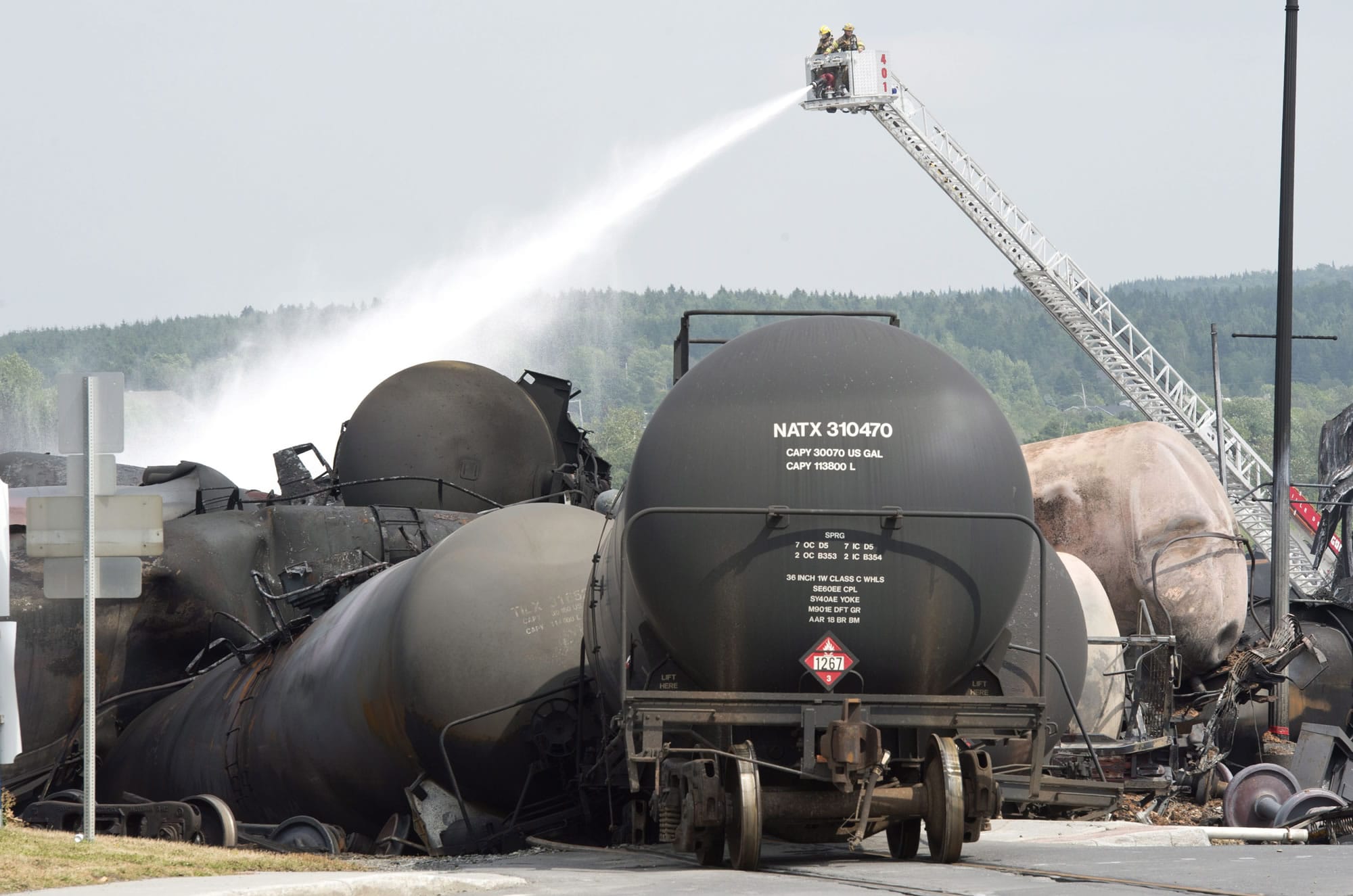WASHINGTON – The Federal Railroad Administration late Friday ordered the nation’s rail carriers to take steps to better secure trains loaded with hazardous cargo, nearly a month after the deadly derailment and explosion of a crude-oil train in Quebec that killed 47 people.
Under the mandatory directive, railroads cannot leave trains carrying such materials unattended on main tracks or sidings until federal regulators sign off on required safety improvements.
Canadian authorities issued a similar directive last month in the aftermath of the July 6 accident, which wiped out the downtown area of Lac-Megantic, only 20 miles from the border with Maine.
“Safety is our top priority,” said U.S. Transportation Secretary Anthony Foxx in a statement. “While we wait for the full investigation to conclude, the department is taking steps today to help prevent a similar incident from occurring in the United States.”
The FRA, which oversees the nation’s railroads, also said it would convene an emergency meeting of its Railroad Safety Advisory committee to see what additional steps need to be taken, including preventing unauthorized access to locomotives and unintended movement of trains.
The directive comes as the shipment of hazardous materials, especially crude oil and ethanol, have increased 400 percent in recent years. Rail has become the preferred way to move much of the crude that has been produced by the use of fracking technology.
The crude oil being hailed by the train that derailed in Lac-Megantic originated in the Bakken region of North Dakota and was being transported eastern Quebec by the Montreal, Maine and Atlantic Railroad, a regional carrier that’s based in Maine.
According to the Association of American Railroads, an industry group, more than 99.9 percent of hazardous material shipments by rail occur without incident. And though railroads carry a variety of volatile materials, crude and ethanol are both flammable liquids that require careful handling.
The FRA also issued a safety advisory jointly with the Pipeline and Hazardous Materials Safety Administration.
Ed Hamberger, the president and CEO of the Association of American Railroads, said rail carriers would quickly put the directive into effect.
“Railroads will implement what has been issued by the FRA today and examine what additional steps might be appropriate to ensure rail continues to be one of the safest ways to move hazardous materials,” he said.
Transport Canada has yet to conclude its investigation into the Lac-Megantic disaster, the worst rail accident in North America in decades.
In a July 19 report, Canadian authorities cited a combination of factors it believed contributed to the accident, including the operation of the 72-car, 10,000-ton train by a single engineer.
According to the report, the train’s engineer had parked the train at the top of a steep grade, relying on the train’s air brakes and a number of manual brakes to hold it in place. He left the train unattended after he finished his workday – long a common practice in the rail industry.
After a series of events including a fire on one of the train’s locomotives, the train rolled down the grade and into Lac Megantic where it derailed.
U.S. and Canadian railroads interchange cars seamlessly across the border, and both countries maintain similar standards for train operations.



